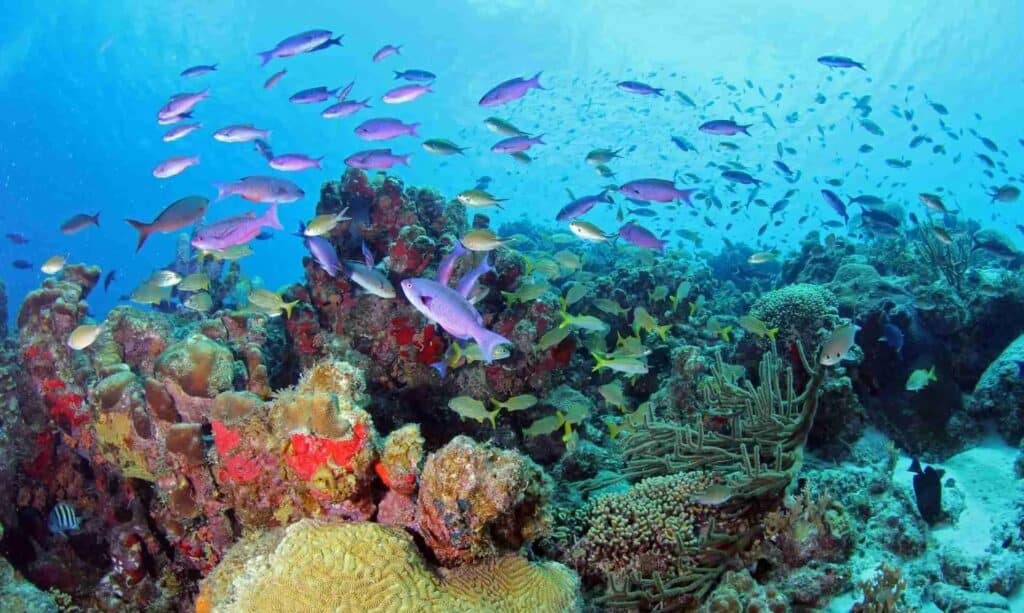
What is traditional Curaçao food?
What is traditional Curaçao food?
Have you ever wondered what flavors define the island’s culinary scene and where you can taste the most authentic Caribbean dishes during your visit?
Discovering the island’s flavorful heritage
Traditional Curaçao food reflects the island’s rich history and diverse cultural influences, blending African, Dutch, Spanish, and Latin American flavors into unforgettable dishes. You’ll find hearty stews like kabritu stoba (goat stew) and karni stoba (beef stew) that simmer slowly with varieties with herbs and spices, creating comforting meals perfect for family gatherings and special occasions. Another beloved dish is Keshi Yena, a creative preparation of hollowed-out Edam cheese stuffed with spiced meat, raisins, and olives that showcases the island’s Dutch heritage.
For your sweet tooth, Curaçao offers Bolo Pretu, a rich fruitcake traditionally enjoyed during holidays, and fluffy pumpkin pancakes with hints of cinnamon that make a delightful breakfast treat. You can also sample Piska Kora, crispy fried fish that’s a common snack at beachside bars and the colorful Floating Market. If you’re adventurous, some traditional menus even feature iguana meat prepared in a gamey broth. Don’t forget to visit vibrant restaurants in Willemstad’s scenic city center, where you can pair these authentic dishes with locally-infused varieties of the famous Blue Curaçao liqueur while enjoying views of the Queen Emma Bridge and colorful architecture.

Luxury car rentals in Curaçao
Experience transparent pricing and exceptional service with Rent Car Curaçao. Choose from luxury vehicles elevate your Curaçao adventure.
Where to experience authentic island flavors
You’ll discover Curaçao’s culinary scene most authentically by exploring both historic neighborhoods and modern dining establishments scattered across this scenic city. The island’s food culture comes alive in restaurants, markets, and casual eateries where generations-old recipes meet contemporary Caribbean creativity.
Dining in Willemstad’s historic districts
Cross the Queen Emma Bridge to explore both sides of St. Anna Bay, where you’ll find exceptional restaurants housed within the island’s colorful architecture. The Punda and Otrobanda districts, recognized as a UNESCO World Heritage site, feature establishments like Ceviche 91 Gastrobar offering fresh seafood preparations and Pizza Mare serving wood-fired classics with harbor views. Many venues occupy restored colonial buildings near landmarks like Mikvé Israël-Emanuel, the Western Hemisphere’s oldest continuously operating synagogue, creating memorable dining experiences that blend history with flavor.
Contemporary cafes and specialty restaurants
Modern culinary hotspots have emerged throughout Willemstad, catering to diverse tastes and dietary preferences. Visit Bliss the Berry for refreshing Açaí bowls and smoothies perfect after beach excursions, or stop by De Dames for European-inspired brunch featuring local ingredients. MosaCaña Bar showcases creative cocktails made with island spirits alongside small plates that highlight Caribbean ingredients. These contemporary establishments complement traditional eateries by offering lighter, health-conscious options while maintaining connections to local food traditions.
Markets and casual dining experiences
The Floating Market provides an authentic glimpse into daily island life, where Venezuelan fishing boats dock along the waterfront selling fresh catch, tropical fruits, and vegetables. You’ll find vendors preparing crispy bites of fish and meat pastries right before your eyes, perfect for a quick lunch during your shore excursion. Local snack stands throughout the city serve crispy delights like fresh pastechi filled with cheese, meat, or fish, offering affordable tastes of traditional recipes prepared using methods passed down through families.
Beachside dining and casual waterfront spots
Numerous beachside bars and restaurants along Curaçao’s coastline serve traditional dishes in relaxed, sand-between-your-toes settings. These casual venues often feature the freshest seafood preparations, including Piska Kora served with funchi and plantains, alongside creamy beef stews simmered to perfection. Many beach clubs pair authentic Caribbean flavors with stunning ocean views, creating ideal environments to sample kabritu stoba or karni stoba while watching sunset paint the horizon. Some establishments also offer Dutch cheeses and European-influenced dishes reflecting the island’s colonial connections.
Experiencing traditional preparations on special occasions
During holidays and celebrations, you’ll encounter Keshi Yena made with high-quality cheese imported from the Netherlands, stuffed with richly spiced meat mixtures that vary by family recipe. Traditional Bolo Pretu, a dense black cake soaked in rum and packed with dried fruits, appears at festive gatherings and weddings throughout the year. Some adventurous menus occasionally feature iguana meat preparations during cultural events, offering curious visitors a taste of pre-colonial culinary traditions. The island’s rich heritage ensures that these time-honored dishes remain central to community celebrations and family gatherings.
What is traditional Curaçao food? - FAQ
What makes Curaçao's food journey unique compared to other Caribbean islands?
Curaçao’s food journey stands out through its distinctive blend of Dutch heritage with African, Spanish, and Latin American influences, creating dishes found nowhere else in the Caribbean. The island’s colonial past resulted in unique preparations like cheese-based entrées using imported European ingredients combined with local spices and cooking techniques. Unlike neighboring islands, Curaçao’s rich heritage includes Sephardic Jewish, Portuguese, and Venezuelan culinary traditions that have merged over centuries, producing an extraordinarily diverse gastronomic landscape where you can experience everything from traditional stews to contemporary fusion cuisine within the same historic neighborhoods.
What should visitors with a sweet tooth try in Curaçao?
Visitors with a sweet tooth will find numerous traditional desserts throughout the island, starting with Bolo Pretu, a dense rich fruitcake soaked in rum and packed with dried fruits, traditionally served during weddings and holidays. Fluffy pumpkin pancakes with hints of cinnamon make an excellent breakfast choice at local cafes and beachside restaurants. The famous Blue Curaçao liqueur itself adds a sweet citrus note to cocktails and desserts. Many bakeries throughout Willemstad also prepare coconut cakes, flan-style custards, and tamarind candies that reflect the island’s multicultural influences and provide perfect endings to authentic Caribbean meals.
How does the comforting dish pairs concept work in traditional Curaçao cuisine?
Traditional Curaçao cooking emphasizes how comforting dish pairs combine hearty stews with complementary sides that balance flavors and textures. Kabritu stoba and karni stoba typically pair with funchi (a cornmeal-based side similar to polenta), rice, fried plantains, or pan bati (flatbread), creating complete meals that sustained families through generations. The slow-cooked, richly spiced stews work harmoniously with starchy accompaniments that absorb flavorful broths while providing satisfying substance. This pairing philosophy extends throughout the island’s culinary traditions, where protein-based main dishes always appear alongside carefully selected sides that enhance rather than compete with the primary flavors.
Where can I find the freshest ingredients at Willemstad's Floating Market?
The Floating Market along St. Anna Bay operates daily with Venezuelan fishing boats docked waterfront, selling the freshest catch, tropical fruits, vegetables, and herbs directly from their vessels. Arrive early morning for the best selection of fish perfect for preparing Piska Kora or ceviche-style dishes. Vendors also offer exotic produce rarely found in standard supermarkets, including cassava, breadfruit, plantains, and aromatic herbs used in traditional Caribbean flavors. This authentic market experience provides insight into daily island life while offering opportunities to interact with vendors who’ve supplied Willemstad’s restaurants and households for generations, making it an essential stop during any shore excursion.
What adventures await beyond traditional dining in Curaçao's culinary scene?
Beyond traditional restaurants, Curaçao’s culinary scene offers unique experiences like food tours through Punda and Otrobanda, cooking classes teaching preparation of Keshi Yena and local stews, and visits to MosaCaña Bar for craft cocktail workshops using island spirits. The Floating Market provides immersive shopping experiences where you can select fresh ingredients then dine at nearby establishments preparing your purchases. Beachside bars along the coast offer casual tastings of crispy delights like pastechi while watching sunset, and distillery tours at production facilities explain the creation of famous liqueurs. These diverse options transform dining from simple meals into memorable cultural experiences throughout your visit.
How do varieties with herbs enhance traditional Curaçao stews?
Traditional island stews rely heavily on varieties with herbs and spices that create distinctive flavor profiles unique to Curaçao’s cuisine. Local cooks use combinations of cilantro, celery, scallions, thyme, and bay leaves alongside warming spices like cumin, paprika, and hot peppers to build complex taste layers in kabritu stoba and karni stoba. Fresh herbs grow abundantly in island gardens and appear in markets, allowing home cooks and restaurant chefs to create aromatic bases called “sofrito” that form foundations for slow-cooked dishes. The specific herb blends vary by family recipe, with some including parsley, oregano, or local varieties passed down through generations.
What role does high-quality cheese play in Curaçao's signature dishes?
High-quality cheese imported from the Netherlands serves as the foundation for Keshi Yena, Curaçao’s most iconic dish that showcases the island’s Dutch heritage. Traditional preparations use hollowed-out Edam or Gouda cheese wheels as both container and ingredient, filled with spiced meat, vegetables, olives, raisins, and capers before baking until the cheese melts into the filling. Dutch cheeses also appear as appetizers at restaurants throughout Willemstad, served with local accompaniments, and feature in contemporary fusion dishes created by innovative chefs. The cheese’s mild, creamy character balances the bold spices in traditional recipes while adding richness and binding diverse ingredients together during cooking.
Can I experience traditional preparations during special occasions as a tourist?
Tourists can experience traditional preparations during special occasions by visiting during major holidays like Carnival (February), King’s Day (April 27th), or Christmas season when restaurants and cultural centers feature festive menus with Bolo Pretu, Keshi Yena, and elaborate versions of classic stews. Many establishments also host weekly cultural nights showcasing traditional cooking methods and live music. Food festivals throughout the year celebrate specific dishes or ingredients, while some tour operators offer experiences at local homes where families prepare authentic recipes using methods unchanged for generations. Advance booking ensures you’ll join these authentic cultural dining experiences that connect visitors with Curaçao’s living culinary heritage.
Where can tourists find the best creamy beef preparations on the island?
Creamy beef stews like karni stoba appear on menus throughout the island, with particularly excellent versions served at family-owned restaurants in residential neighborhoods beyond tourist centers. Vibrant restaurants in Willemstad’s Scharloo district and near the Queen Emma Bridge prepare this comforting dish pairs with traditional sides, slow-cooking beef until tender in rich, slightly sweet tomato-based sauces. Beachside bars along the western coast also serve authentic versions in relaxed settings with ocean views. Ask locals for their favorite spots, as the best preparations often come from establishments where recipes have remained family secrets for generations, creating depth of flavor impossible to replicate in tourist-focused venues.
How does Curaçao's UNESCO World Heritage status influence its culinary offerings?
The UNESCO World Heritage designation of Willemstad’s historic districts has helped preserve not only the colorful architecture but also traditional food culture within these protected neighborhoods. Restaurants operating in colonial buildings near landmarks like Mikvé Israël-Emanuel synagogue often maintain authentic recipes alongside their historic settings, creating dining experiences that honor both architectural and culinary heritage. The designation attracts cultural tourism that supports traditional food businesses, encouraging preservation of preparation methods, family recipes, and locally-sourced ingredients. Walking through Punda and Otrobanda’s protected streets, you’ll discover how the scenic city maintains its gastronomic traditions within carefully preserved historic contexts that tell stories through both buildings and flavors.
Discover the Wonders
of Klein Curaçao
Experience the untouched beauty of Klein Curaçao, a hidden paradise with stunning beaches and rich marine life. Perfect for snorkeling, diving, or simply relaxing in the sun.
Popular subjects
Luxury car rentals in Curaçao
Experience transparent pricing and exceptional service with Rent Car Curaçao. Choose from luxury vehicles elevate your Curaçao adventure.
Subscribe to our newletter
Discover the Wonders of Klein Curaçao
Experience the untouched beauty of Klein Curaçao, a hidden paradise with stunning beaches and rich marine life. Perfect for snorkeling, diving, or simply relaxing in the sun.





